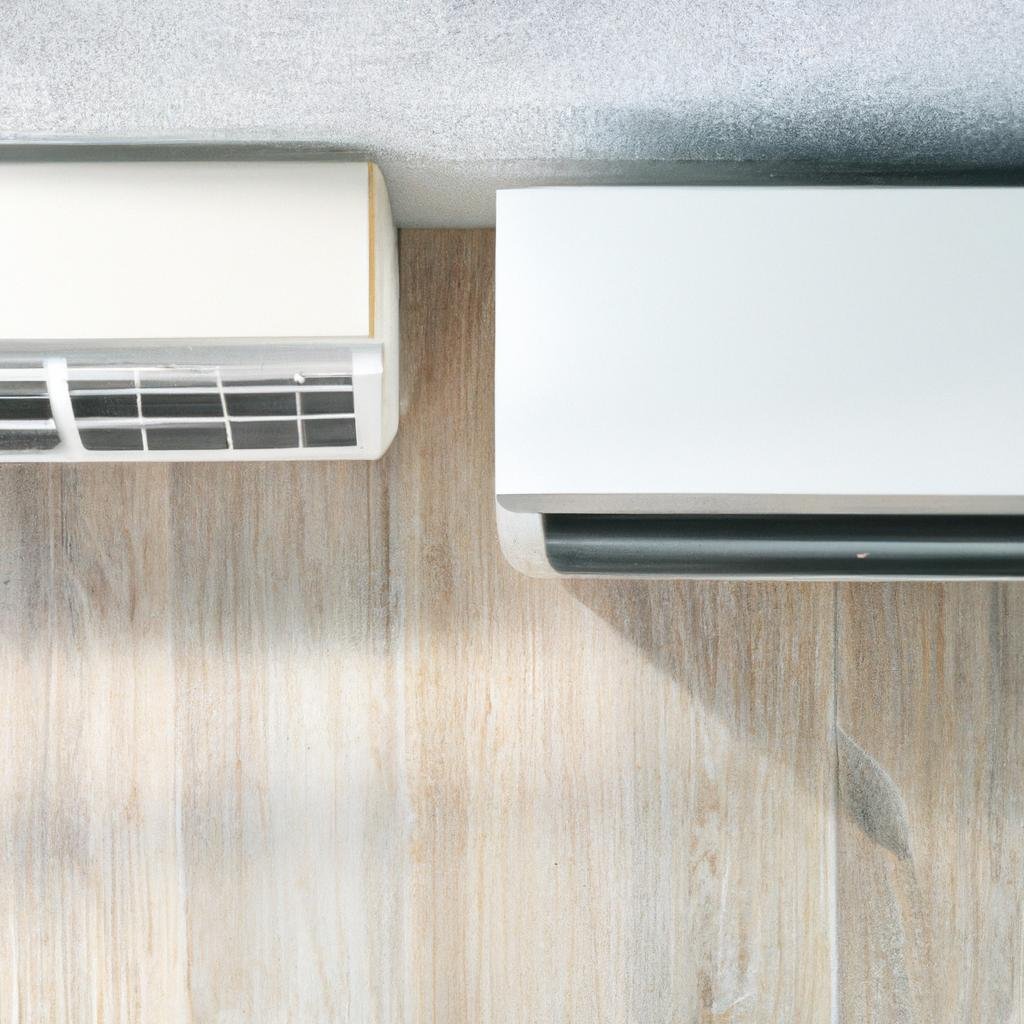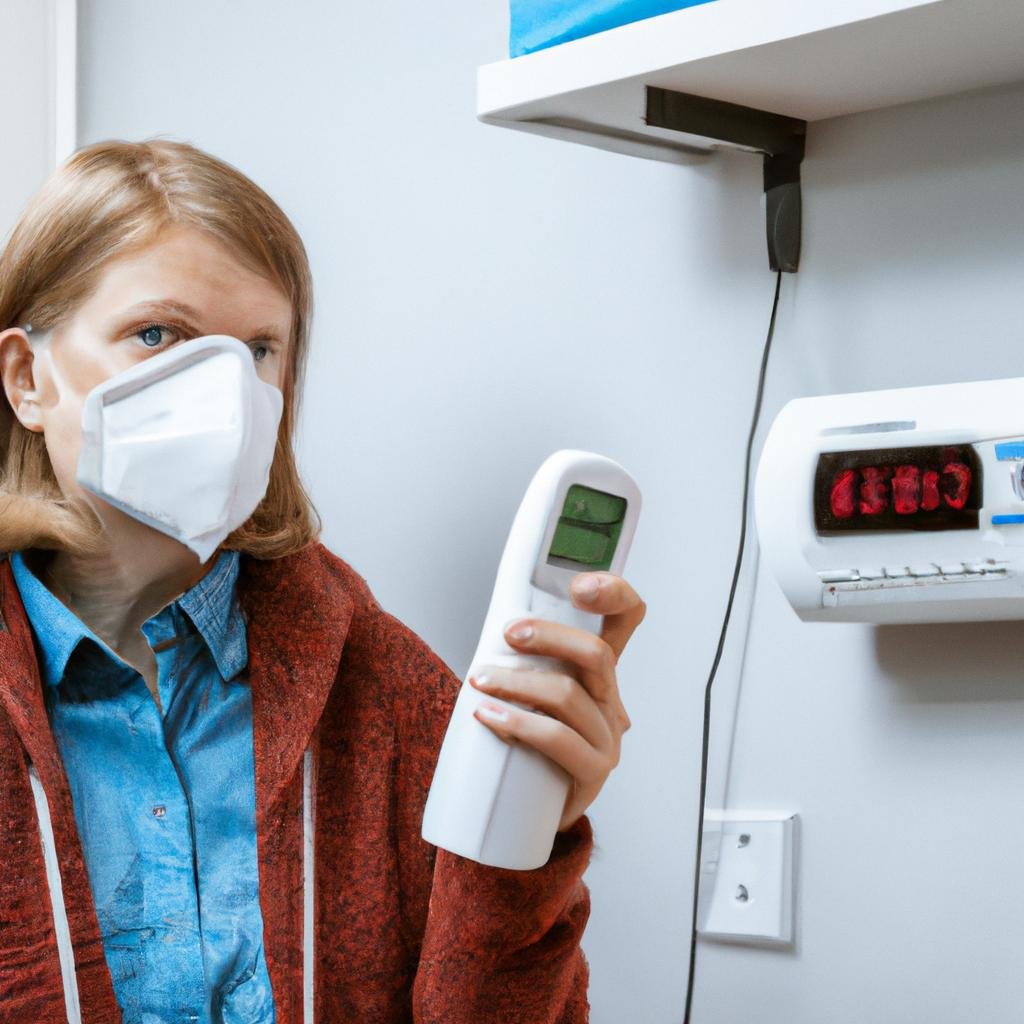Winter has draped her icy shawl over our heads and huddled around indoor heaters, you might be asking, ”At what temperature does my cozy, little friend, the mini split, decide to just put up its metaphorical feet and say ’That’s it! I am on vacation’?” Get ready for a thermal thrill ride as we delve into the fascinating world of mini split heating, and uncover where frosty conditions might leave you in the cold. So, fluff up your favorite blanket and grab a hot beverage, because we’re about to turn up the temperature on knowledge, in a friendly and easy to digest manner!
Understanding the Temperature Limits of Your Mini Split
As a proud owner of a mini split, it’s important to know that although it’s a top-notch, versatile device, it too has its limits. One critical limitation is temperature, as with every AC unit or heat pump out there. Most of these systems will run efficiently at temperatures above 20 degrees Fahrenheit for the heating mode and under 95 degrees Fahrenheit for the cooling mode.
However, when temperatures hit the extremes, your mini split might stutter. When the thermometer dips below 5 degrees Fahrenheit, the heating efficiency of most standard mini splits drops significantly. On the flip side, during extreme heatwaves when temperatures soar above 105 degrees Fahrenheit, the cooling function can become compromised. Here’s a quick look at these critical temperature points:
| Mode | Efficient Operation Temperature | Extreme Temperature Limit |
|---|---|---|
| Heating | Above 20 degrees Fahrenheit | Below 5 degrees Fahrenheit |
| Cooling | Under 95 degrees Fahrenheit | Above 105 degrees Fahrenheit |
Be conscious of these temperature limitations when you harness the power of your mini split. Understand that it’s normal if your system struggles under extreme weather conditions. No product is perfect, and every HVAC system will hit roadblocks in maintaining indoor comfort when Mother Nature goes all out. Know when to give your mini split a break, and when it might be time to get a little extra help from auxiliary heating or cooling systems.

Plunging Degrees: When Your Mini Split May Struggle to Perform
As hardy as mini split systems are, they can sometimes fall short in executing their duties effectively, especially when faced by extreme cold conditions. Normally, a well-maintained mini split unit will function excellently in temperatures as low as -15°C (5°F). However, performance might wane as the mercury drops, leading to reduced efficiency. This is due to the harder work the heat pump needs to conduct to extract sufficient heat from freezing air.
The condition of the mini split system also plays a significant role in its performance. Factors such as the age of the unit, whether it’s been properly maintained and serviced, and the quality of the initial installation all impact how a system will respond to colder temperatures. There are, nonetheless, measures you can implement to improve the performance of your mini split during frigid conditions:
- Regular maintenance: This will keep your mini split running optimally.
- Supplemental heating: If your mini split struggles, a backup heat source could help.
- Quality installation: Proper initial setup is key for long-term performance.
| Temperature | Performance | Action |
|---|---|---|
| -15°C (5°F) and above | Optimal | Regular maintenance |
| -15°C to -20°C (5°F to -4°F) | Reduced | Supplemental heating |
| Below -20°C (-4°F) | Very limited | Consider alternative heating |
Understanding these factors and making the necessary provisions can help owners of mini split systems traverse the winter months more conveniently, ensuring a warm and welcoming home environment irrespective of the plunging temperatures.

Maximizing the Efficiency of Your Mini Split in Extreme Temperatures
When dealing with extreme temperatures, it’s essential to understand the limitations of your mini split system. The effectiveness of a mini split largely depends on the temperature outside, and the unit can struggle to reach your desired indoor temperature during particularly extreme weather. Remember, the colder it is outside, the harder the unit must work to draw in and heat the air. Conversely, the hotter it is, the more the system will need to expend to cool down your home.
Here are a couple of pointers to keep your mini split performing at its best:
- Proper Installation: Make sure the unit is installed by a certified professional to guarantee optimal performance. However, please note that the inappropriate location can result in inefficient operation.
- Maintenance: Regular maintenance is crucial to keep the unit running smoothly. Clean the filters every two weeks and schedule a professional service at least once a year.
- Insulation: Optimal insulation can drastically reduce energy consumption and make it easier for the mini split to maintain the desired temperature.
However, the question still remains: at what temperature does a mini split stop working? The answer largely depends on the model. Some can heat efficiently as low as -15°F, while others might struggle below 32°F. On the temperature scale for cooling, a well-equipped mini split should handle up to 122°F.
| Model | Heating Minimum | Cooling Maximum |
|---|---|---|
| Model A | -15° F | 122° F |
| Model B | 32° F | 104° F |
In conclusion, to maximize your mini split’s efficiency in extreme temperatures, ensure proper installation, regular maintenance, and adequate insulation. Also, check your manufacturer’s documentation to confirm your mini split’s specific operating temperature range.

Implementing Practical Solutions for Your Mini Split During Temperature Drops
When the mercury dips, your dependable mini split can face some challenges. Different models have varied low-temperature limits, but generally, heat pumps may struggle when the temperatures fall under 30 degrees Fahrenheit. For Arctic mini splits, this limit lowers to -14 degrees Fahrenheit. However, with the right precautions, it’s possible to safeguard your system and maintain a cozy atmosphere indoors.
One helpful hint is to insulate outdoor piping. By tackling this, you pre-emptively solve a common issue that arises because of low temperatures: freezing. To insulate, start by:
- Inspecting your unit outside, checking for exposed pipes
- Buying insulation tape, preferably self-sealing
- Wrapping all the unshielded piping carefully, making sure you cover every bit
Another great strategy is to invest in a cold climate mini split. These units are designed to work efficiently even in extreme cold. Here’s a brief comparison of some cold climate mini splits:
| Model | Lowest Operating Temperature |
|---|---|
| Mitsubishi Hyper Heat | -13 degrees Fahrenheit |
| Fujitsu Halcyon | -15 degrees Fahrenheit |
| Daikin Aurora | -13 degrees Fahrenheit |
Though slightly pricier, cold climate mini splits offer reliability and peace of mind during those cold snaps. No matter the temperature drop, with the right measures in place, you can keep your space comfortably warm without worrying about your mini split system not working.
Q&A
Q: What type of heating and cooling system are we talking about today?
A: We are talking about the mini split heating and cooling system, a versatile and efficient choice for many homes.
Q: Interesting! So what’s the key question here?
A: Our primary focus is understanding at what temperature a mini split stops working or loses efficiency.
Q: Got it. So let’s dive in – at what temperature does the mini split stop working?
A: Many mini splits can operate at temperatures as low as -15 degrees Fahrenheit for heating and as high as 115 degrees Fahrenheit for cooling, but this can vary based on the brand and model.
Q: Wow, that’s impressive! But what happens when the temperature drops below -15 degrees?
A: Most mini split systems may struggle to provide an efficient heating solution. If you live in an exceptionally cold climate, you might need a backup heating system.
Q: Alright, and what about on the hotter side of things?
A: If the temperature exceeds 115 degrees Fahrenheit, cooling performance may begin to decline, and continued operation could lead to system damage.
Q: Can this impact the longevity of the mini split system?
A: Yes, continuously pushing a mini split system to operate in extreme conditions can potentially shorten its lifespan.
Q: What can be done to ensure optimal performance of a mini split system in extreme temperatures?
A: Regular servicing and maintenance, alongside proper installation, can help ensure your mini split system operates well, even during challenging weather conditions.
Q: Okay, and what should one consider when buying a mini split system?
A: Buyers should consider their local climate, and find a system rated for those conditions. Energy efficiency ratings, size, and cost are also important factors.
Q: Fantastic insights! Do all mini splits have a temperature limit?
A: Yes, all mini splits have recommended temperature limits for optimal performance. However, these can vary based on particular models and manufacturers, so always check the specifications.
Q: Any final thoughts or tips?
A: Always remember, a well-maintained mini split can offer you comfort for years to come, regardless of how hot or cold it gets outside. Above all, understand your system and treat it well for the best results!
In Retrospect
So there you have it, folks! A deep dive into the world of mini splits, their working mechanisms and their relationship with temperature. Remember, nothing’s too hot or cold for your trusty mini split, as long as you’re working within the -13°F to 115°F range. A quick recap: the low-temperature limit is about -13°F, while the high-temperature limit is around 115°F. However, always check out your specific unit’s documentation to get the most accurate information. So, armed with this newfound wisdom, be the thermostat king or queen in your own dwelling, knowing just when to crank it up or chill it down. Keep warm, keep cool, and keep smiling with your mini split air conditioner humming happily by your side!
